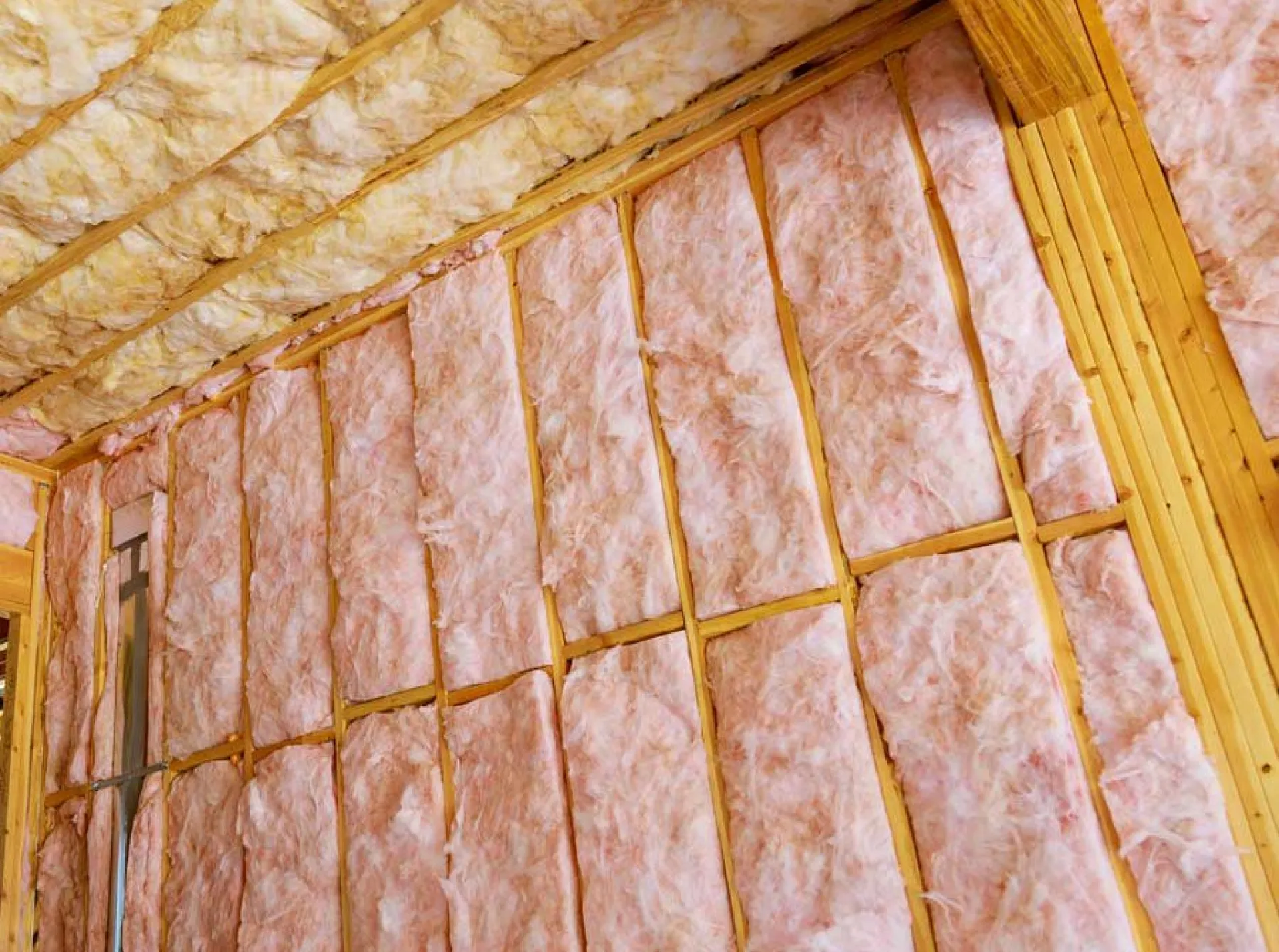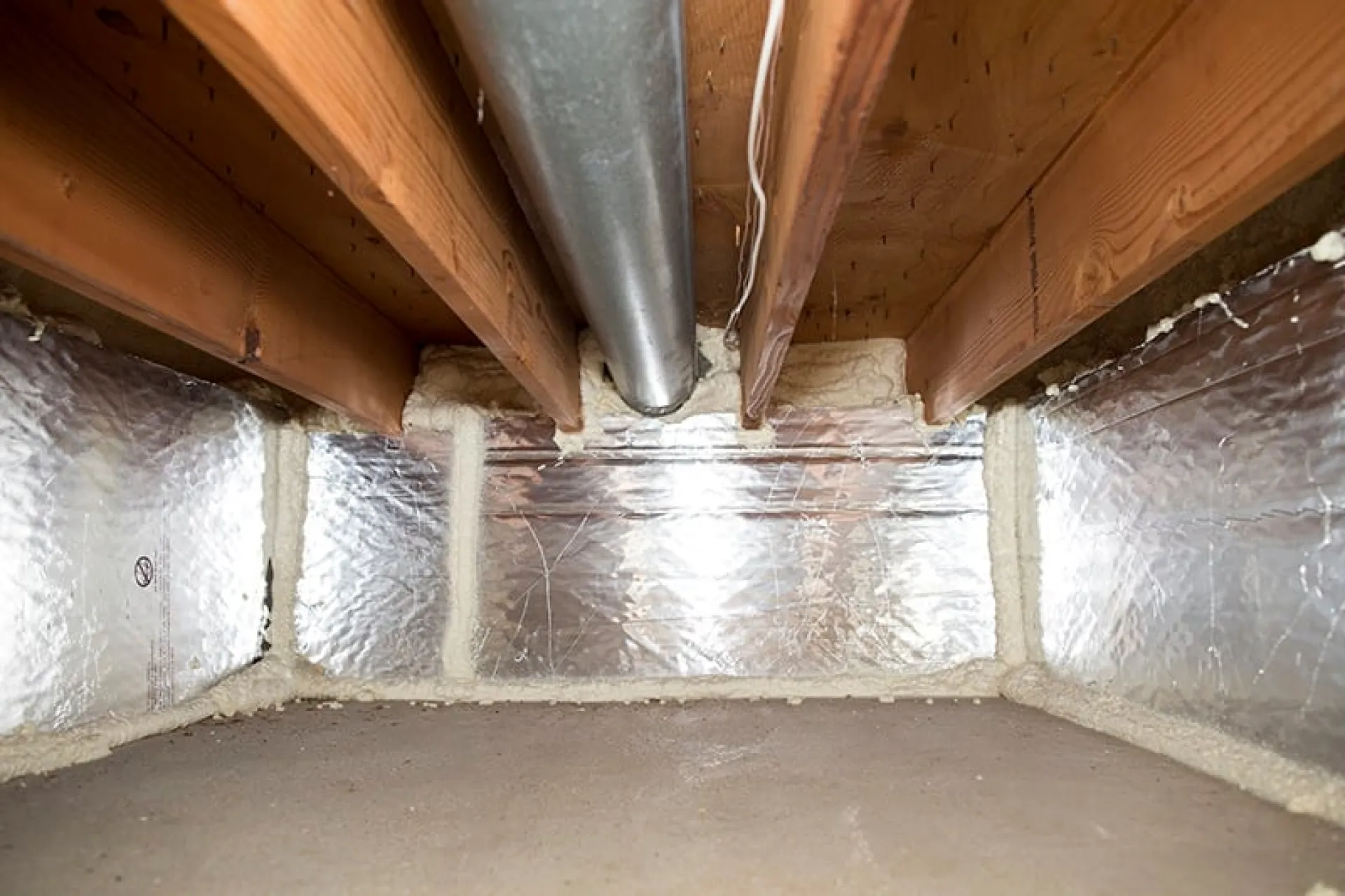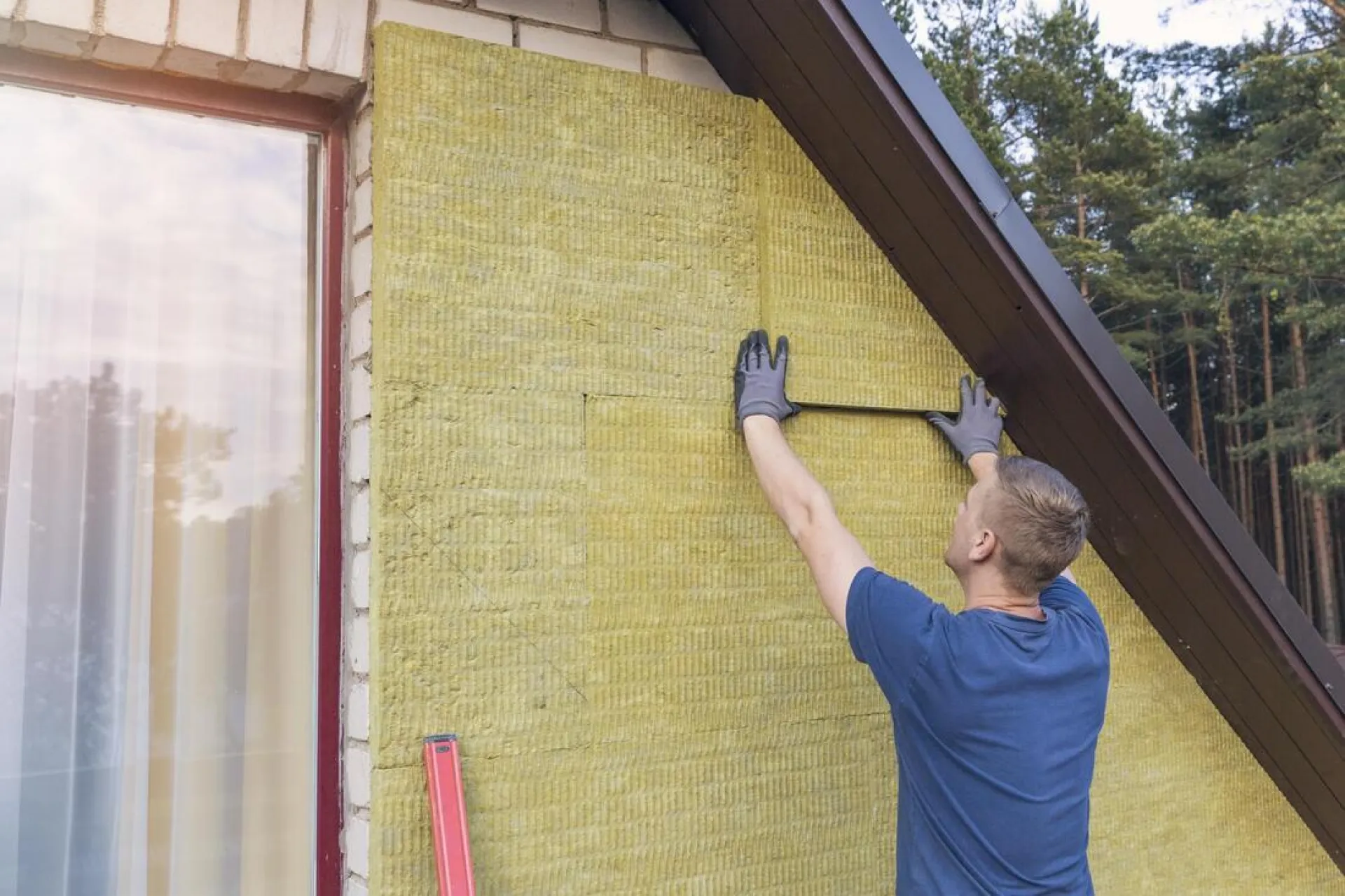Install Huzzler App
Install our app for a better experience and quick access to Huzzler.

Posts
When it comes to keeping your Seattle home comfortable year-round while also cutting down on energy costs, insulation plays a critical role. Among the various insulation options available, fiberglass insulation stands out as one of the most popular and time-tested materials used in homes and commercial buildings alike. In this post, we’ll explore what fiberglass insulation is, its benefits, types, installation tips, and why it might be the right choice for your next project.
What is Fiberglass Insulation?
Fiberglass insulation is made primarily from fine strands of glass that are woven together and bonded to form a fluffy, wool-like material. It is most commonly found in batts, rolls, and loose-fill forms. Designed to trap pockets of air, fiberglass insulation slows the spread of heat, keeping warm air in during the winter and out during the summer.
This type of insulation has been in use since the 1930s and remains a popular choice because it’s affordable, effective, and readily available.
Types of Fiberglass Insulation
There are three main types of fiberglass insulation to consider:
- Batt Insulation: Pre-cut panels that fit between studs, joists, and beams. This is ideal for unfinished walls, floors, and ceilings.
- Roll Insulation: Similar to batts but comes in longer rolls, making it useful for large areas with few obstructions.
- Loose-Fill (Blown-In) Insulation: Tiny particles of fiberglass blown into attics or walls. It conforms well to odd-shaped spaces and around obstructions.
Benefits of Fiberglass Insulation
Fiberglass insulation offers a number of advantages that make it an excellent choice for homeowners and contractors:
- Energy Efficiency: It significantly reduces heating and cooling costs by improving your home’s thermal performance.
- Cost-Effective: Generally less expensive than other insulation materials like spray foam.
- Fire Resistant: Fiberglass is non-combustible, providing added safety.
- Sound Dampening: Helps reduce noise transmission between rooms and floors.
- Environmentally Friendly: Many fiberglass insulation products contain a significant amount of recycled glass.
Installation Tips
While fiberglass insulation can be installed by DIYers, there are some important considerations to keep in mind:
- Wear Protective Gear: Fiberglass can irritate the skin, eyes, and respiratory system. Always wear gloves, a mask, and protective clothing.
- Proper Fit: Ensure batts or rolls fit snugly without being compressed, as compressing reduces their effectiveness.
- Seal Gaps and Cracks: Use caulk or foam sealant around windows, doors, and other openings before installing insulation.
- Check for Moisture Issues: Never install insulation over wet surfaces, as this can lead to mold and mildew problems.
For those not comfortable tackling the project themselves, hiring a professional insulation contractor ensures proper installation and maximum performance.
Fiberglass vs. Other Insulation Types
While fiberglass is a solid choice, it’s worth comparing it to other insulation materials:
- Spray Foam: Offers higher R-values and air sealing properties, but is more expensive.
- Cellulose: Made from recycled paper and treated for fire resistance. It’s effective but can settle over time.
- Mineral Wool: Fire-resistant and water-repellent, but generally pricier than fiberglass.
Fiberglass hits a sweet spot in terms of cost, effectiveness, and ease of installation.
Local Considerations for Seattle Homes
Seattle's climate, with its wet winters and mild summers, makes insulation even more critical. Properly installed fiberglass insulation can help:
- Prevent heat loss during the chilly months.
- Improve indoor comfort without over-reliance on HVAC systems.
- Lower utility bills, which is always a plus given rising energy costs.
Additionally, in areas with higher humidity, it’s crucial to pair fiberglass insulation with vapor barriers to prevent moisture buildup.
Conclusion
Fiberglass insulation remains a dependable, affordable, and energy-efficient option for Seattle homeowners looking to improve comfort and reduce energy expenses. Whether you’re insulating a new build or upgrading an older home, fiberglass is a flexible solution that adapts well to most scenarios.
If you're considering installing or upgrading your insulation, the team at Seattle Insulation is here to help. With years of experience and a commitment to quality, we can guide you through your options and ensure your home stays comfortable all year long. Contact us today for a free consultation!

As Seattle residents, we know a thing or two about unpredictable weather—from rainy winters to warm, dry summers. While we may be prepared with umbrellas and rain boots, many homeowners overlook one of the most crucial areas of their home: the attic. If you've never given much thought to your attic insulation, you're not alone—but you could be missing out on major energy savings, improved comfort, and even better air quality. In this post, we’ll break down what attic insulation is, why it’s essential, and how to make the best choices for your Seattle home.
What Is Attic Insulation?
Attic insulation refers to the material installed in your attic to prevent the transfer of heat between your home and the outside environment. Its primary role is to help regulate your home's temperature by reducing heat loss in the winter and heat gain in the summer. This means your heating and cooling systems don’t have to work as hard—translating into lower energy bills and a more comfortable living environment.
Why Attic Insulation Is Especially Important in Seattle
Seattle’s climate is considered temperate, but it comes with its own set of challenges. Damp, chilly winters and occasional summer heatwaves mean that insulation needs to be versatile and effective year-round. Here are a few reasons why attic insulation is a smart investment for Seattle homeowners:
- Moisture control: Proper insulation combined with ventilation helps control moisture, reducing the risk of mold and mildew—a common issue in our rainy climate.
- Energy savings: According to the U.S. Department of Energy, homeowners can save up to 15% on heating and cooling costs by insulating attics and crawl spaces.
- Environmental impact: Using less energy isn’t just good for your wallet—it’s good for the planet, too.
- Comfort: Whether it’s a chilly January or a surprisingly hot July, good insulation helps maintain a consistent indoor temperature.
Types of Attic Insulation
Not all insulation is created equal. Here are some of the most common types used in Seattle-area homes:
1. Fiberglass Batt Insulation
This is one of the most common and cost-effective types. It comes in pre-cut panels and is fairly easy to install. It’s ideal for attics with standard joist spacing and few obstructions.
2. Blown-In (Loose-Fill) Insulation
Made from fiberglass or cellulose, blown-in insulation is perfect for attics with irregular joist spacing or lots of obstructions. It can fill in small gaps and is great for topping off existing insulation.
3. Spray Foam Insulation
Spray foam offers a high R-value (a measure of insulation’s effectiveness) and can also act as an air and moisture barrier. While more expensive, it’s extremely energy-efficient and especially beneficial in older homes with leaky attics.
4. Reflective or Radiant Barriers
These are installed under the roof to reflect heat away during summer months. While not a substitute for thermal insulation, they can be a great supplemental option.
How Much Insulation Do You Need?
The recommended level of attic insulation varies depending on your location. For Seattle (Zone 4), the U.S. Department of Energy recommends between R-49 and R-60 for attics. If you’re unsure what your current R-value is, a professional energy audit can help assess your needs.
Signs Your Attic May Be Under-Insulated
Not sure if your attic needs attention? Here are some signs:
- Uneven temperatures between floors
- High energy bills, especially in winter
- Cold drafts or hot spots in the home
- Ice dams forming on your roof in winter
- Pest issues or signs of moisture in the attic
DIY vs. Professional Installation
While some forms of insulation—like fiberglass batts—can be installed by a savvy DIYer, others, such as spray foam or blown-in insulation, are best left to the pros. A professional insulation company like Seattle Insulation brings expertise, proper tools, and knowledge of local building codes, ensuring the job is done right the first time.
Plus, professionals can help you identify potential air leaks and ventilation issues that could compromise your insulation’s effectiveness. They can also recommend the best type of insulation for your specific attic design and budget.
Rebates and Incentives for Seattle Residents
Did you know Seattle-area homeowners may qualify for utility rebates or energy efficiency incentives? Local utilities like Seattle City Light and Puget Sound Energy often offer rebates for insulation upgrades. It’s worth checking with your utility provider or speaking with an insulation contractor to find out what programs you might qualify for.
Final Thoughts
Investing in attic insulation is one of the smartest moves you can make as a Seattle homeowner. It’s a cost-effective way to increase comfort, lower your energy bills, and protect your home from moisture and temperature extremes. Whether you’re upgrading an old home or building a new one, don’t overlook your attic—it plays a bigger role in your home’s performance than you might think.
At Seattle Insulation, we’re here to help you every step of the way. From free assessments to professional installation, our team of experts will ensure your attic is ready to take on the Seattle weather—rain or shine.

When most homeowners think about insulating their home, they usually picture the attic or exterior walls. But there’s one hidden area that plays a massive role in comfort, energy efficiency, and even indoor air quality: the crawl space. In Seattle’s damp, chilly climate, crawl space insulation isn't just a good idea—it’s essential.
In this post, we’ll walk you through what crawl space insulation is, why it’s important (especially here in the Pacific Northwest), the different types available, and what to expect when insulating or upgrading your crawl space. Whether you’re building a new home or retrofitting an older one, this guide will help you make informed choices.
What Is Crawl Space Insulation?
A crawl space is a narrow, unfinished space beneath your home—usually between the ground and the first floor. It may contain plumbing, HVAC systems, and electrical wiring. Because it’s exposed to outdoor air, moisture, and fluctuating temperatures, this area can directly impact the conditions inside your home.
Crawl space insulation involves adding insulating materials to reduce heat loss and moisture intrusion. The goal is to create a thermal barrier that keeps your home warmer in winter, cooler in summer, and protected from dampness year-round.
Why Crawl Space Insulation Matters in Seattle
Seattle’s weather is unique—wet winters, moderate temperatures, and high humidity levels. These conditions can wreak havoc on an uninsulated or improperly insulated crawl space. Here’s how:
1. Energy Efficiency
Without insulation, cold air seeps up through the floor in winter, forcing your heating system to work harder. Insulating your crawl space helps trap heat where it belongs—inside your home—reducing your energy bills and carbon footprint.
2. Moisture Control
Seattle is no stranger to rain, and crawl spaces can become breeding grounds for mold, mildew, and wood rot if moisture isn't properly managed. Insulation—combined with a vapor barrier—helps block moisture, preserving your home’s structural integrity.
3. Improved Air Quality
Believe it or not, a significant portion of the air you breathe indoors comes from the crawl space. If this area is damp or moldy, those contaminants can make their way into your living space. A well-insulated and sealed crawl space improves overall indoor air quality.
4. Pest Prevention
Crawl spaces can be attractive hiding spots for rodents and insects. Certain types of insulation materials, especially when paired with sealing techniques, can help deter unwanted critters from setting up camp under your home.
Types of Crawl Space Insulation
There isn’t a one-size-fits-all solution for insulating a crawl space. The right choice depends on factors like ventilation, moisture levels, and whether the space is vented or sealed. Here are the most common insulation options:
1. Fiberglass Batt Insulation
This is a budget-friendly option commonly used between floor joists. While effective in some cases, it’s prone to absorbing moisture—something to consider in Seattle’s damp environment. It works best in dry, ventilated crawl spaces.
2. Spray Foam Insulation
Spray foam is a premium option that expands to fill gaps and cracks, offering excellent thermal resistance and moisture control. It’s particularly effective in sealed crawl spaces. Plus, it deters pests and reduces air leakage.
3. Rigid Foam Board
Rigid foam insulation is water-resistant and provides a high R-value (thermal resistance) per inch. It’s often used along crawl space walls and in combination with vapor barriers. It’s a solid choice for both new construction and retrofits.
Sealed vs. Vented Crawl Spaces
Seattle homeowners should seriously consider sealing their crawl space. Traditionally, crawl spaces were vented to allow moisture to escape, but research shows that vented spaces can actually invite moisture in—especially in humid climates.
A sealed (or encapsulated) crawl space uses a vapor barrier on the floor and walls, paired with insulation and sometimes a dehumidifier. This modern approach creates a controlled environment that improves energy efficiency, reduces mold growth, and lowers long-term maintenance costs.
Professional Installation vs. DIY
While DIY insulation projects are possible, crawl spaces can be challenging—and even dangerous—to work in. Low clearance, exposure to mold or pests, and the need for proper sealing techniques make professional installation the best choice for most homeowners.
At Seattle Insulation, we understand the specific needs of homes in the Pacific Northwest. Our experienced technicians evaluate your crawl space, recommend the best insulation type, and handle every step of the process—safely and efficiently.
Signs Your Crawl Space Needs Insulation
Not sure if your crawl space needs attention? Here are a few telltale signs:
- Cold floors in winter
- High energy bills
- Musty odors
- Visible mold or mildew
- Pest infestations
- Sagging or damp insulation
If you notice any of these, it’s time for an inspection.
Final Thoughts
Crawl space insulation may not be the flashiest home improvement project, but its impact is undeniable—especially in Seattle’s climate. By insulating and sealing this overlooked area, you’re investing in year-round comfort, lower energy bills, better air quality, and the long-term health of your home.
Need help figuring out the best insulation option for your crawl space? Reach out to Seattle Insulation today for a free consultation. We’re proud to serve homeowners across the greater Seattle area with expert advice, high-quality materials, and friendly service.

If you’ve ever wondered why some rooms in your house feel drafty in winter or heat up too quickly in summer, the answer often lies behind your walls. Wall insulation is one of the most essential—yet frequently overlooked—parts of a comfortable, energy-efficient home. Whether you're building new, remodeling, or just trying to improve your existing home’s performance, understanding wall insulation is key.
At Seattle Insulation, we believe that every homeowner deserves to be informed about how insulation works and how it can dramatically impact your comfort, energy bills, and even the environment. Let’s take a deep dive into wall insulation—what it is, how it works, and how to choose the best option for your home.
Why Wall Insulation Matters
Insulation serves as a thermal barrier. It slows down the transfer of heat, helping to keep warm air inside during Seattle’s chilly winters and outside during the hot months. While attic and crawl space insulation often get the spotlight, walls represent a large surface area where energy can be lost if they’re not properly insulated.
Poorly insulated walls lead to:
- Higher heating and cooling costs
- Inconsistent indoor temperatures
- Drafts and cold spots
- Excessive strain on HVAC systems
- Reduced soundproofing between rooms or from outside noise
Adding or upgrading your wall insulation can solve many of these issues in one go.
Types of Wall Insulation
There are several types of insulation materials used in walls. Each has unique benefits, depending on your budget, wall type (existing vs. new construction), and climate.
1. Fiberglass Batts
Fiberglass is one of the most common insulation materials, typically found in batt or roll form. It’s relatively affordable and easy to install in open wall cavities.
Best for: New construction or major remodels where the walls are open.
Pros:
- Cost-effective
- Good thermal resistance (R-value)
- Readily available
Cons:
- Can leave gaps if not installed properly
- Less effective against air leaks
2. Blown-In Cellulose
Made from recycled paper treated with fire retardants, cellulose insulation is blown into wall cavities through small holes. This makes it a great choice for retrofitting existing walls.
Best for: Older homes or when adding insulation to finished walls.
Pros:
- Environmentally friendly
- Fills in irregular cavities and gaps
- Good soundproofing
Cons:
- Can settle over time
- Requires professional installation
3. Spray Foam Insulation
Spray foam expands upon application, creating an air-tight seal that’s excellent for thermal and moisture protection.
Best for: High-performance insulation needs or hard-to-reach wall areas.
Pros:
- Highest R-value per inch
- Excellent air sealing
- Reduces moisture and mold risk
Cons:
- More expensive
- Requires trained professionals
4. Rigid Foam Panels
These boards can be cut and fitted between studs or added to the outside of wall sheathing in some cases.
Best for: New builds or major exterior renovations.
Pros:
- High R-value
- Moisture-resistant
- Durable
Cons:
- Difficult to retrofit
- Needs precise installation to avoid gaps
How to Know If Your Walls Are Under-Insulated
Many homes in Seattle—especially older ones—were built before energy codes required effective insulation. If you’re unsure whether your walls are properly insulated, here are some signs to watch for:
- Drafts: Feeling cold air even when windows and doors are closed
- Uneven Heating or Cooling: Some rooms are always warmer or colder
- High Energy Bills: Poor insulation makes HVAC systems work harder
- Cold Walls: Interior walls feel chilly to the touch during winter
- Noise: You hear a lot of outside noise or room-to-room echoes
A home energy audit or thermal imaging inspection can provide a clearer picture.
The Seattle Climate Factor
Seattle’s unique climate—a mix of damp winters and mild summers—makes wall insulation a priority. The constant dampness can also lead to mold if insulation isn’t installed correctly or if moisture barriers are missing. Choosing moisture-resistant insulation and working with professionals who understand local codes and weather patterns is crucial.
Professional vs. DIY Wall Insulation
While some insulation types can be installed by experienced DIYers, wall insulation—especially retrofitting—is often best left to professionals. Here’s why:
- Expert Evaluation: Pros can recommend the right type based on your wall construction and needs.
- Proper Sealing: Air sealing and moisture barriers are just as important as the insulation itself.
- Code Compliance: Professionals ensure your home meets Seattle’s energy codes.
- Efficiency & Longevity: A well-done job lasts longer and performs better.
Final Thoughts
Wall insulation is one of the smartest investments you can make in your home. Whether you're aiming for better energy efficiency, increased comfort, or lower utility bills, upgrading your wall insulation is a cost-effective way to achieve those goals.
At Seattle Insulation, we’re here to help you make informed, confident decisions about your home’s insulation. From evaluating your current setup to professional installation using the highest quality materials, our team is ready to help you create a home that feels just right—year-round.
Contact us today for a free consultation or to schedule a home insulation evaluation. Let’s make your walls work for you!
